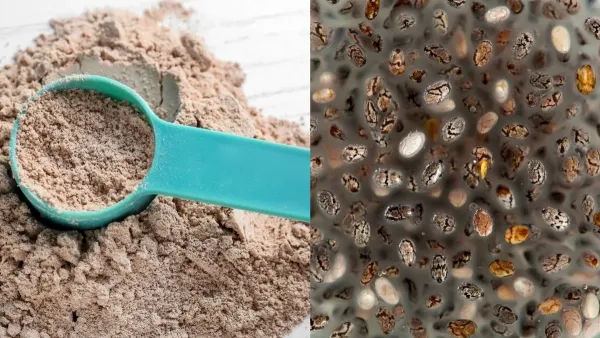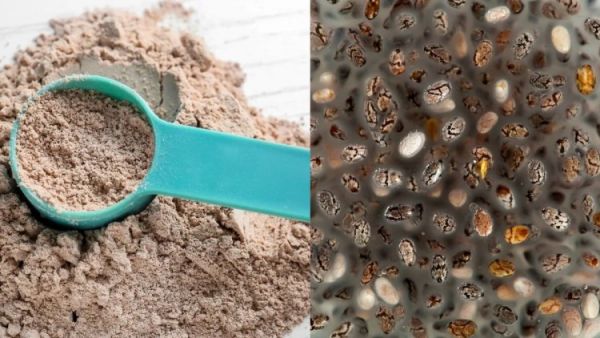
Comparing Chia Seeds Gel with Powder: Hardly anybody doesn’t desire hair that is shiny and healthy. A widespread issue that has grown in popularity recently is hair loss. People experiment with many hair growth methods, such as conditioning, shampoos, and hair treatments, but chia seeds have been shown to be among the most effective natural solutions.

Omega-3 fatty acids, protein, antioxidants, and vital minerals abound in chia seeds, which are well-known for their nutritional advantages and provide enough advantages for hair. However, it’s sometimes unclear to holistic health and beauty aficionados if chia seed gel or powder produces greater hair growth outcomes. This is all the information you need.
Powdered Chia Seeds for Hair Development
The powdered form of chia seeds, known as chia seed powder, retains all of the health advantages of the whole seeds. The following are some advantages of using chia seed powder in hair.
To create hair masks that soothe the scalp, chia seed powder may be combined with additional components like oils or other herbal infusions. By enhancing blood circulation and feeding the roots, the powder helps transfer vital nutrients into the hair follicles when it is rubbed into the scalp. Additionally, omega-3 fatty acids support a healthy scalp, which is critical for the development of hair.
Chia seed powder may be used as a deep-conditioning treatment when combined with an oil, such coconut or olive oil. Proteins and fatty acids help to restore damaged hair, reduce frizz, and encourage lustrous, silky strands. By keeping the hair follicles fed and the hair strands robust, regular usage of this powder promotes hair development.
Chia seed powder is an excellent scalp exfoliant. It ensures that the vital nutrients are rich for hair development by removing dead skin cells, unclogging pores, and improving blood circulation to the hair follicles when rubbed in a circular manner.
The protein and zinc in chia seed powder decrease hair thinning, which in turn stops hair loss. By strengthening the hair from the ground up, it becomes more durable and less likely to break.
Chia Seed Gel to Promote Hair Development
By soaking chia seeds in water, they expand and take on a thick, gel-like consistency, which is how chia seed gel is made. Here are some reasons why chia seed gel promotes hair development.
Chia seed gel’s moisturising properties allow the hair to retain moisture. When applied to the scalp and hair, it prevents dryness and flakiness while providing long-lasting moisture. Stronger, thicker hair grows from healthy hair follicles, which are encouraged by a well-moisturized scalp.
When applied to the scalp, the gel increases the thickness of the hair. It keeps each hair strand hydrated, giving the appearance of larger, voluminous hair. Gel made from chia seeds promotes the development of healthier, thicker hair.
An itchy and inflamed scalp is soothed by the anti-inflammatory qualities of chia seed gel. It promotes hair development by treating psoriasis and dandruff on the scalp.
Unlike conventional gels, this one is non-greasy and may be used often as a natural style gel. It gives the hair a smooth, glossy finish while holding it in place without harming it or generating buildup.
Which Is Better for Hair Growth, Chia Seed Gel or Powder?
For Damaged or Dry Hair: Chia seed gel is the recommended choice for this kind of hair. It offers strong moisture retention, smoothness, and hydration. It helps bring back the suppleness and natural lustre of dry, brittle hair.
A healthier option for nourishing the scalp, enhancing blood circulation, and fortifying hair follicles may be chia seed powder. The powder’s exfoliating and protein-rich qualities make it a great choice for hair development.
Hair Care Routine: To get the most advantages for the hair, use chia seed powder and gel together. While gel gives the scalp moisture and lustre, powder nourishes the scalp, promoting growth.
Therefore, both choices are quite effective, depending on the demands of the hair, and when used together, they gradually promote hair development.